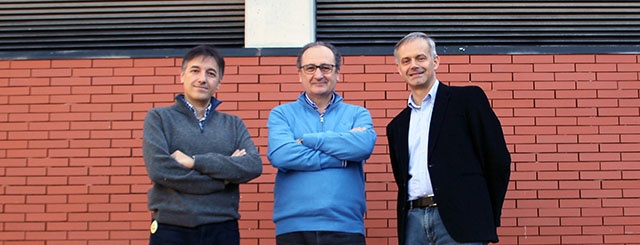A multidisciplinary research team from the Universitat de València, Universidad Politécnica de Madrid and the Queen Mary University of London has resolved a mystery that disconcerted biologists for over a century: How and why basal metabolism changes its mass? Basal metabolism is the minimal energy required by the organism to stay alive. This work has been published in Natures’ open access portal Scientific Reports.
An adult human being in absolute rest and living in a 20º C temperature environment approximately consumes a calorie per kilo and hour. However, an elephant consumes in the very same time half a calorie per kilo of mass, and a mouse the bundle of 70 calories per kilo.
German physiologist Max Rubner was one of the first to notice it when he studied basal metabolism in dogs of different sizes in 1883. Rubner proposed that the cause of this phenomenon was the heat that was lost through the skin. The skin surface depends on the squared size of the animal, while the volume depends on the cubed size. This means that basal metabolism B varies proportionally to the 2/3 elevated mass, M2/3. However, the measures that in 1932 his Swiss biologist namesake Max Kleiber carried out in distinct mammals of different sizes (including rats and oxen) seemed to indicate that metabolism actually swung in accordance with M3/4.This is the exponent that is known nowadays as Kleiber Law.
Searching an answer for this exponent opened an intense debate for decades. It seemed to conclude in 1997 with the fractal model proposed by the physicist Geoffrey West and his collaborators. This model justified the exponent because of the fractal shape of the resource distribution webs in organisms, such as it happens in the circulatory system and the respiratory system. Measuring the basal rate in organisms is a fragile, arduous and experimental task. As metabolic measures increased in more animals, the fractal model started to show more discrepancies. This way, in some animal groups such as little birds or insects, the 3/4 exponent does not work. Even in mammals, for which Kleiber law was conceived, data show a notable divergence from the theoretical law.
The authors of a recent article published in Scientific Reports, Fernando J. Ballesteros and Vicent J. Martínez (Astronomic Observatory of the Universitat de València), Bartolo Luque (E.T.S.I. Aeronáuticos de la Universidad Politécnica de Madrid), Lucas Lacasa (School of Mathematical Sciences, Queen Mary University of London), Enric Valor (Department of Thermodynamics of the Universitat de València) and Andrés Moya (Instituto de Biología Integrativa y de Sistemas-UV/CSIC) have found out now the lost piece of the jigsaw puzzle thanks to a theoretical model of Astrophysics. “While writing the book Fractales y caos, in which we regard Kleiber Law, we realised that West’s fractal model did not fit in. The thermic explanation seemed more natural, but we had to take into account the energetic part that did not dispel as heat” indicates Fernando Ballesteros. “Vicent and I introduced this in the thermic model and found out that the data fit in perfectly with our theory. Andrés quickly noticed that our model was a trade-off, an evolutionary exchange. We perfected it together. Enric strengthen the thermic model following the trade off, and Bartolo and Lucas widened it to other living beings apart from mammals, confirming its predictive power”, concludes.
Scientifics propose an agreement between passive caloric dissipation and the minimal energetic consume for cell maintenance as a solution. Not all the energy consumed by an organism turns into heat. Part of it is used for cell division, for synthesising proteins... In other words, it is used to keep the organism working and for maintenance necessities. If all consumed energy turned into heat, the consuming effect would actually be 2/3. However it would not be an organism, but a heater. On the other hand, if all energy was efficiently consumed, consume would be directly proportional to the number of cells, this is to the M mass, but a part of it is unavoidably lost. Real organisms maintain an agreement between these two extremes. The weighted sum of both components explains the curvature in the basal metabolism of mammal data. It also explains the different connections found in distinct groups of animals. Nonetheless, it also answers to the metabolic differences between desert-like and polar animals, or even plant metabolism.
On the thermodynamic origin of metabolic scaling. Fernando J. Ballesteros, Vicent J. Martínez, Bartolo Luque, Lucas Lacasa, Enric Valor & Andrés Moya
Scientific Reports, 17-30960 (2018)


